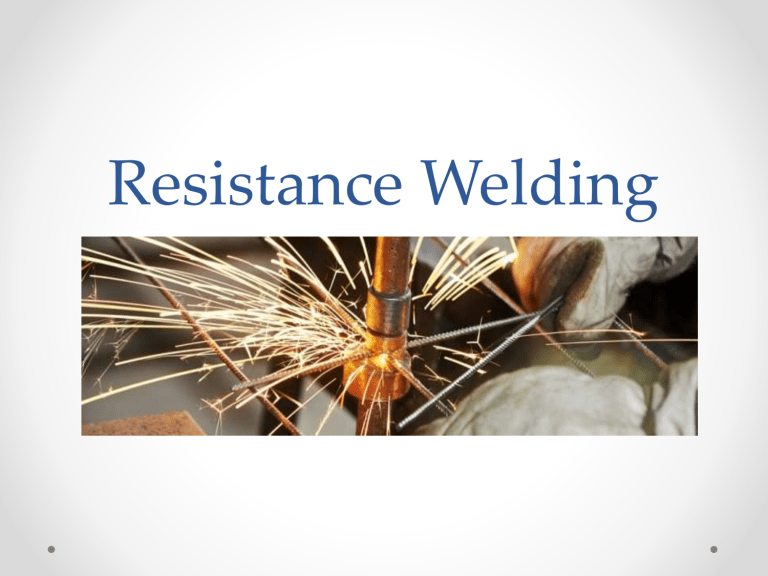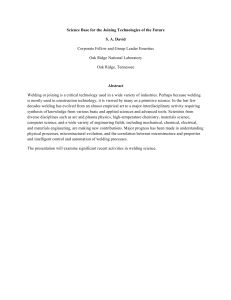Resistance Welding: Types, Applications, Advantages & Disadvantages
advertisement

Resistance Welding Resistance Welding • A liquid state welding process • Is a thermo-electric process o Uses electric resistance to generate heat Working Principal • Heat is generated by passing current through a electric resistance • Amount of heat produced is depend on o Resistivity of the material o Surface conditions o Current Supplied o Time 𝐻 = 𝐼 2 𝑅𝑇 Types of RW • • • • Spot Welding Seam Welding Projection Welding Flash Butt Welding • Spot Welding • Simplest type of resistance welding • Two copper electrodes with anvil faces • Create a circular nugget ( 4-7 mm ) Seam Welding • Also known as Continuous Spot Welding • A roller type electrodes are used • Create a continuous weld joint • The time and movement of electrode is controlled o Weld overlap and work piece does not get too hot • Used to create air tight joints Projection Welding • Dimple is produced on work piece • Flat electrodes Flash butt Welding • • • • Used to weld tubes and rods in steel industries Work pieces are clamped in the electrode holders high pulsed current in the range of 100000 ampere Electrodes – One is Fixed and other is movable Applications • Resistance welding • Projection welding • Seam welding • Flash welding - automotive industries - production of nut and bolt - produce leak prove joint required in small tanks, boilers etc. -welding pipes and tubes Advantages • • • • • It can weld thin (0.1 mm) as well as thick (20mm) metals. High welding speed. Easily automated. Both similar and dissimilar metals can be weld. The process is simple and fully automated so does not required high skilled labor. • High production rate. • It is environment friendly process. • It does not require any filler metal, flux and shielding gases. Disadvantages • High equipment cost. • The thickness of work piece is limited due to current requirement. • It is less efficient for high conductive materials. • High electric power required. • Weld joints have low tensile and fatigue strength. Thank You!




